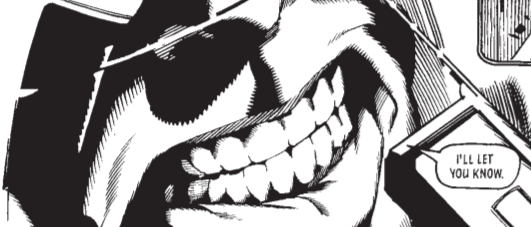
Instead of my usual feature image of the book’s cover, I couldn’t resist this clip from the opening sequence of the Inside Job animated TV series, which seems to me a nod to the Stoned Ape theory
(8) TERENCE MCKENNA –
FOOD OF THE GODS: THE SEARCH FOR THE ORIGINAL TREE OF KNOWLEDGE – A RADICAL HISTORY OF PLANTS, DRUGS & HUMAN EVOLUTION (1992)
“I think it’s time to discuss your, uh, philosophy of drug use as it relates to artistic endeavour.” – William S. Burroughs, The Naked Lunch.
Stoned Ape theory, anyone?
Terence McKenna may be a trip and a hoot, perhaps the trippiest and, ah, hootiest, entry in this top ten, although there are a few rival claimants.
But seriously, my philosophical taste leans towards aphorism, the memorable or striking phrase (and idea) – quip and koan, each (and both) of which might be regarded as synonymous with trip and hoot. After, a good koan resembles both a hoot and a trip, the latter ideally the purpose of the koan leading to enlightenment.
Terence McKenna certainly had the gift for memorable or striking phrase and idea, lodging deep in your psyche even if you don’t accept or agree with them, but even more so was one of the leading ‘philosophers’ of the literal drug trip.
And perhaps never more so than in this book, arguably his magnum opus – nothing less than the radical history of humanity and drugs, and even more so the prehistory of humanity and drugs. Enter the Stoned Ape theory, which in a nutshell puts a spin on Genesis where God made man – but in which God was a mushroom.
No, seriously, McKenna proposed that the cognitive transformation from our hominid ancestors to our present human species mainly involved the addition of psychoactive mushrooms (growing in dung!) to our diet, based on the alleged effects of such mushrooms on cognitive capacity.
The intellectual or observational gems don’t stop there – one thing that has always stuck in my head ever since reading it in the book is how much the European empires originated as or were drug plantation empires, particularly if you count sugar as a drug – as McKenna persuasively argues we should.
It gets trippier from there, as indeed did McKenna in general – “an American ethnobotanist and mystic who…spoke and wrote about a variety of subjects, including psychedelic drugs, plant-based entheogens, shamanism, metaphysics, alchemy, language, philosophy, culture, technology, ethnomycology, environmentalism and the theoretical origins of human consciousness…one of the leading authorities on the ontological foundations of shamanism and the intellectual voice of rave culture”.
Not to mention machine elves.
This of course saw him come under criticism from those who didn’t see him as the fun he was.
Judy Corman wrote “surely the fact that Terence McKenna says that the psilocybin mushroom is the megaphone used by an alien, intergalactic Other to communicate with mankind is enough for us to wonder if taking LSD has done something to his mental faculties.”
While Peter Conrad wrote “I suffered hallucinatory agonies of my own while reading his shrilly ecstatic prose”. You fool, Conrad – that shrilly ecstatic prose is the best part!
I prefer the views of Tom Hodgkinson and Mark Jacobson. The former stated that to write McKenna off “as a crazy hippie is a rather lazy approach to a man not only full of fascinating ideas but also blessed with a sense of humor and self-parody”, while the latter wrote “it would be hard to find a drug narrative more compellingly perched on a baroquely romantic limb than this passionate Tom-and-Huck-ride-great-mother-river-saga of brotherly bonding,” adding “put simply, Terence is a hoot!”
‘Nuff said. McKenna is a hoot – and a trip!
RATING: 4 STARS****
A-TIER (TOP TIER)










